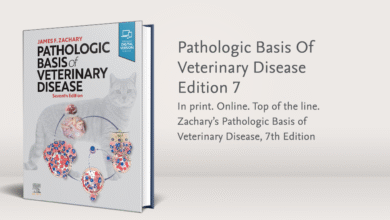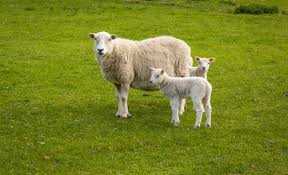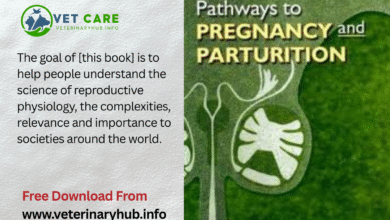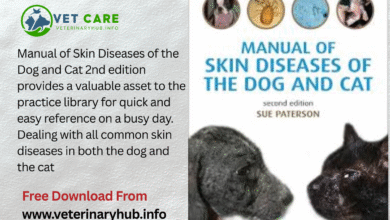A meta-analysis of the effects of dietary protein concentration and degradability on milk protein yield and milk N efficiency in dairy cows

This meta-analysis examines how varying dietary protein concentration and protein degradability affect milk protein yield and nitrogen (N) efficiency in dairy cows. By analyzing data from multiple studies, it aims to determine optimal protein feeding strategies that enhance milk protein production while improving nitrogen utilization efficiency, thus supporting both productivity and environmental sustainability in dairy farming.
All Veterinary Books Free Download Here: Library
Nitrogen (N) efficiency in dairy production is a key concern due to its implications for both productivity and environmental impact. Inefficient nitrogen utilization results in excessive nitrogen excretion into the environment, contributing to air and water pollution, and raises concerns over sustainability in the dairy industry. A crucial component influencing nitrogen efficiency is dietary protein, specifically its concentration and degradability. The meta-analysis under discussion provides a comprehensive evaluation of how dietary protein concentration and the degradability of protein in the rumen affect milk protein yield and nitrogen efficiency in lactating dairy cows.
This meta-analysis synthesizes results from multiple peer-reviewed studies to establish general trends and reliable conclusions about the effects of protein feeding strategies on key performance indicators in dairy cows. The two primary focus areas of the analysis are milk protein yield, which directly affects the economic return of milk production, and milk nitrogen efficiency (MNE), which refers to the proportion of dietary nitrogen converted into milk protein.
Study Objectives
The main objectives of this meta-analysis are:
- To quantify the effect of total dietary crude protein (CP) concentration on milk protein yield and MNE.
- To assess the influence of rumen degradable protein (RDP) vs. rumen undegradable protein (RUP) on the same performance parameters.
- To provide a framework for optimizing protein feeding strategies that balance animal productivity with environmental sustainability.
Methodology
The meta-analysis pooled data from a large number of published experiments that met inclusion criteria related to study design, cow type (lactating dairy cows), and the presence of relevant data (e.g., dietary CP levels, milk protein yield, N intake and output). Studies were standardized to correct for differences in reporting and data presentation. Statistical models were applied to detect linear and non-linear relationships, control for confounding variables, and calculate weighted mean effects.
Findings
1. Effect of Protein Concentration:
The analysis found that increasing dietary crude protein (CP) concentration typically led to an increase in milk protein yield, but only up to a certain threshold. Beyond approximately 17% CP in the diet, further increases did not significantly enhance milk protein output. In some cases, very high CP diets even led to reduced efficiency due to increased nitrogen excretion.
This diminishing return suggests that cows have a physiological limit to how much dietary nitrogen can be utilized for milk protein synthesis. When nitrogen intake exceeds the cow’s metabolic capacity, the excess is excreted, primarily as urea in urine, leading to lower nitrogen use efficiency.
2. Effect on Milk Nitrogen Efficiency (MNE):
Milk nitrogen efficiency was observed to decrease with increasing dietary CP concentration. This inverse relationship is critical from an environmental and economic standpoint. While increasing protein intake can boost milk protein output to a point, it simultaneously reduces the proportion of nitrogen that ends up in the milk, meaning more nitrogen is lost to the environment.
The optimal MNE was found at moderate protein levels (approximately 15–16.5% CP), where nitrogen intake and utilization for milk synthesis were most balanced. This underscores the importance of not simply maximizing protein input but targeting optimal levels to achieve high productivity without compromising sustainability.
3. Protein Degradability (RDP vs. RUP):
The degradability of protein also significantly affected outcomes. Diets higher in rumen undegradable protein (RUP) generally led to improved milk protein yield compared to diets high in rumen degradable protein (RDP). This is because RUP escapes degradation in the rumen and is absorbed in the intestines, providing amino acids directly to the cow for productive use, including milk protein synthesis.
However, this effect was also subject to diminishing returns. Excessive RUP can impair rumen microbial protein synthesis by reducing available nitrogen in the rumen, which is essential for microbial growth. Thus, the balance between RDP and RUP is crucial. An ideal ratio supports both microbial protein production and post-ruminal amino acid supply.
Practical Implications
The findings of this meta-analysis offer valuable insights for dairy nutritionists and farm managers. Rather than indiscriminately increasing protein levels in dairy rations, a more nuanced approach is advised. The following practical recommendations emerge from the study:
- Optimize, don’t maximize: Total dietary CP should be optimized around 16–17% depending on production stage, rather than maximized, to avoid nitrogen waste and reduce feed costs.
- Balance RDP and RUP: Rations should maintain an optimal RDP-to-RUP ratio that supports both rumen microbial health and amino acid availability for milk protein synthesis.
- Monitor MNE: Farms should monitor milk urea nitrogen (MUN) as a proxy for nitrogen efficiency and adjust rations accordingly to enhance sustainability.
Conclusion
This meta-analysis provides strong evidence that both the concentration and degradability of dietary protein significantly influence milk protein yield and nitrogen utilization in dairy cows. While increasing CP intake can enhance milk production, there is a threshold beyond which nitrogen efficiency declines and environmental losses increase. RUP-rich diets can be beneficial but must be carefully balanced with adequate RDP to support microbial function.
These insights underscore the need for precision feeding strategies in modern dairy farming. By optimizing protein nutrition, producers can simultaneously improve productivity, reduce nitrogen waste, and contribute to more environmentally responsible dairy systems.





